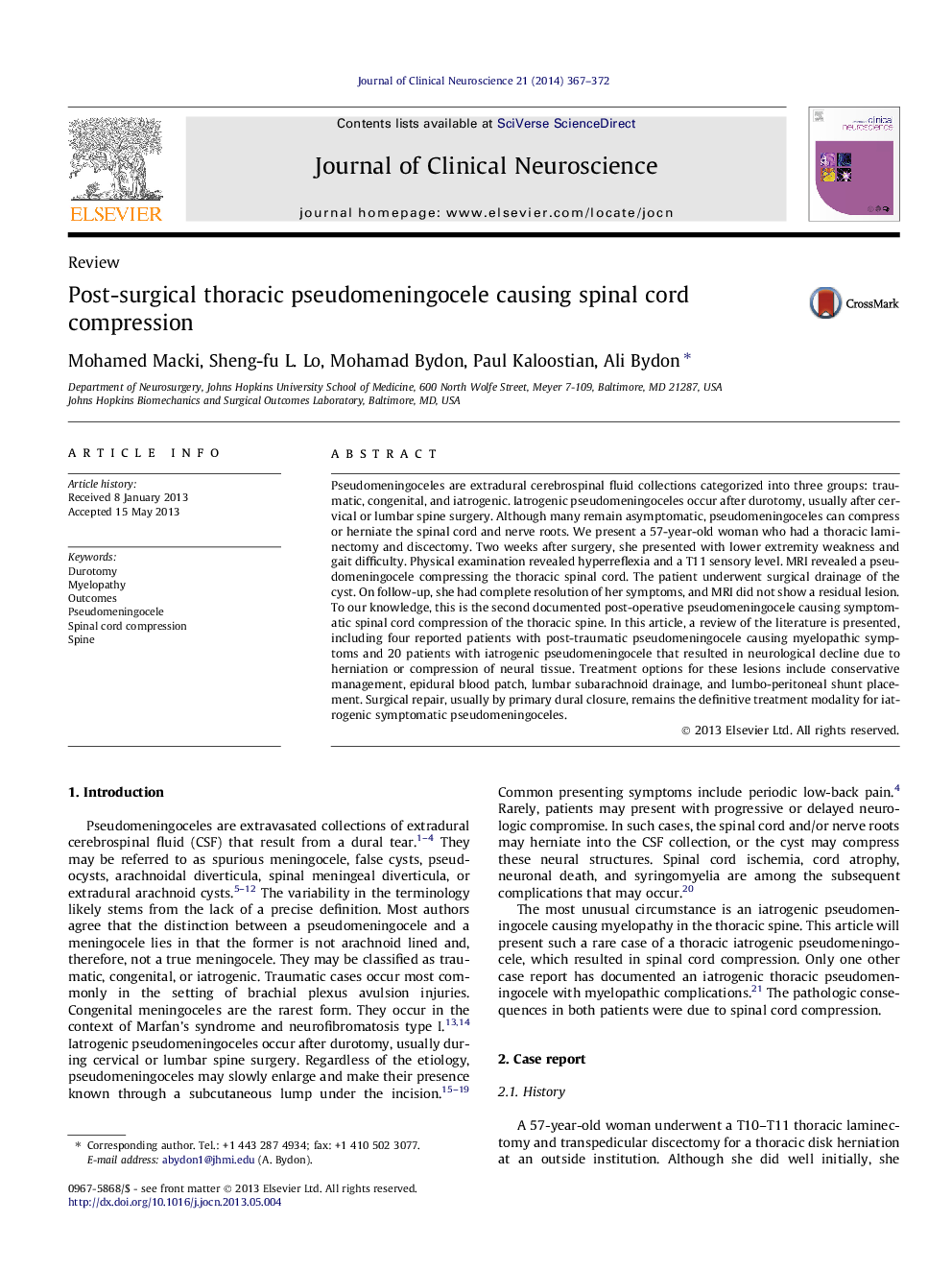| کد مقاله | کد نشریه | سال انتشار | مقاله انگلیسی | نسخه تمام متن |
|---|---|---|---|---|
| 3059424 | 1187427 | 2014 | 6 صفحه PDF | دانلود رایگان |
Pseudomeningoceles are extradural cerebrospinal fluid collections categorized into three groups: traumatic, congenital, and iatrogenic. Iatrogenic pseudomeningoceles occur after durotomy, usually after cervical or lumbar spine surgery. Although many remain asymptomatic, pseudomeningoceles can compress or herniate the spinal cord and nerve roots. We present a 57-year-old woman who had a thoracic laminectomy and discectomy. Two weeks after surgery, she presented with lower extremity weakness and gait difficulty. Physical examination revealed hyperreflexia and a T11 sensory level. MRI revealed a pseudomeningocele compressing the thoracic spinal cord. The patient underwent surgical drainage of the cyst. On follow-up, she had complete resolution of her symptoms, and MRI did not show a residual lesion. To our knowledge, this is the second documented post-operative pseudomeningocele causing symptomatic spinal cord compression of the thoracic spine. In this article, a review of the literature is presented, including four reported patients with post-traumatic pseudomeningocele causing myelopathic symptoms and 20 patients with iatrogenic pseudomeningocele that resulted in neurological decline due to herniation or compression of neural tissue. Treatment options for these lesions include conservative management, epidural blood patch, lumbar subarachnoid drainage, and lumbo-peritoneal shunt placement. Surgical repair, usually by primary dural closure, remains the definitive treatment modality for iatrogenic symptomatic pseudomeningoceles.
Journal: Journal of Clinical Neuroscience - Volume 21, Issue 3, March 2014, Pages 367–372
